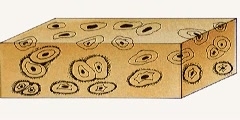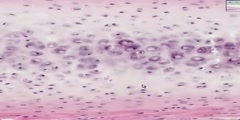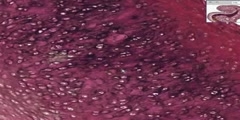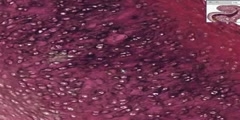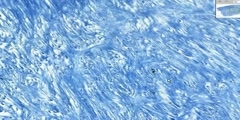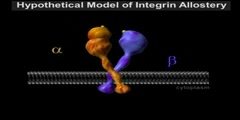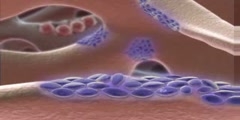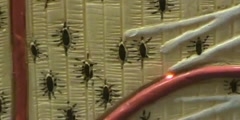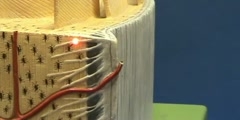Articular cartilage
Articular cartilage, also called hyaline cartilage, is the smooth, glistening white tissue that covers the surface of all the diarthrodial joints in the human body. As its name implies, articular cartilage is critical in the movement of one bone against another. Articular cartilage has an incredibly low coefficient of friction which, coupled with its ability to bear very large compressive loads, makes it ideally suited for placement in joints, such as the knee and hipArticular cartilage is not a homogeneous tissue. Instead, it has a very complex composition and architecture that permits it to achieve and maintain proper biomechanical function over the majority of a human lifespan. Articular cartilage is composed mainly of water (70-80% by wet weight). The solid phase of articular cartilage consists primarily of type II collagen and aggrecan, a chondroitin and keratan sulfate proteoglycan. Collagen forms a network of fibrils, which resist the swelling pressure generated by the proteoglycans. Aggrecan, because of its tendency to noncovalently interact with hyaluronic acid, forms huge aggregates that become trapped in the collagen network. Because of their numerous negatively charged sulfate groups, these proteoglycan aggregates attract cations, which in turn bring in water to minimize differences in osmotic pressure. Thus, type II collagen and proteoglycans create a swollen, hydrated tissue that resists compression.
Channels: Medical
Tags: articular cartilage chondrites superficial zone radial calcified bone collagen
Uploaded by: sikadi ( Send Message ) on 07-07-2009.
Duration: 0m 21s
